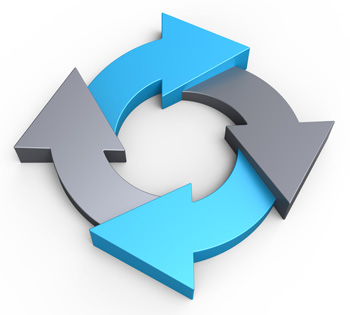 To conduct a successful inbound marketing campaign you will need to build out a variety of assets, be it conversion pages, forms, CTAs, or the content offers themselves. However, it’s the automated workflows that tie all these different pieces together and enable you to automate the nurturing process. If you’re a frequent reader of our blog, I’m sure you know that our favorite tool to accomplish this is HubSpot, though there are other software programs available offering similar functionality.
To conduct a successful inbound marketing campaign you will need to build out a variety of assets, be it conversion pages, forms, CTAs, or the content offers themselves. However, it’s the automated workflows that tie all these different pieces together and enable you to automate the nurturing process. If you’re a frequent reader of our blog, I’m sure you know that our favorite tool to accomplish this is HubSpot, though there are other software programs available offering similar functionality.
Here’s a quick step-by-step guide to have your first automated marketing workflow up and running:
First, you will need to determine what triggers the workflow. One of the best ways to do this is to use digital body language to segment leads into targeted lists that are tied to the workflows. For example, if a prospect has returned to the page detailing a specific service your company offers, that would be a great way to enroll them into a workflow presenting relevant content educating them further about the solutions that product provides. The other way to accomplish this is to trigger a workflow based on a specific form submission to download a gated offer. The workflow can then present further content related to the initial download.
The second step is to determine the individual steps your workflow will have. It may have as little as one step, or it can be a more complicated multi-step process. The majority of the workflows we build, both for ourselves and our clients, focus on three different aspects of the marketing + sales process.
- The first aspect is to nurture that prospect and continue to present them content that they can engage with that will move them down the funnel. This should be determined by your buyer personas and an effective content strategy.
- The second is to segment that lead into organized lists, related to the content they are engaging with, as well as their current lifecycle stage. Automating this change in lifecycle with lead scoring is one of the greatest advantages of automated marketing. It allows us, at a glance, to see how many leads we have at a given lifecycle stage, or who are engaging with a particular offer.
- The third aspect is to automate the process of keeping the sales team up to date with these leads after they have been scored as marketing qualified. That way, each time they return to the site, or download another content offer, the sales team is immediately notified and can quickly take the appropriate steps to follow up.
By incorporating these three unique aspects into a workflow, we can control all the different aspects of the nurturing process in one place and keep our marketing and sales teams up to speed on the impact our efforts are having.
Now that the individual steps making up each workflow have been defined, we can set up the timing for each to be executed. The most important part of this is defining a timeframe for follow up emails to the prospect. For many B2B companies, even though the target audience may have longer buying cycles, we’ve found that a quicker nurturing workflow, two days between emails for example, is effective and allows your marketing + sales team to strike while the iron is hot, so to speak, while you have the attention of your prospect.
Now that your workflow is set up, its steps defined, and the timeframe each is executed is determined, it’s time to make the workflow live. Make sure to continue to monitor the key performance indicators both of the workflow as a whole, as well as the individual assets themselves, so that you can quickly make any necessary changes and optimize the workflow.
If you have any questions about this process, or would like to speak to one of our experienced inbound marketing experts, don’t hesitate to reach out. We would love to discuss how you can use inbound marketing and how marketing automation software may be able to help your business grow.





